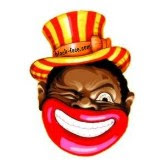

This is the dream that was sold to us by the forefathers of this country who did not take into consideration a civil war over property.
This is the big picture.
It doesn’t matter how many opinions circulate negating that fact.
We have forgotten that each event that has occurred throughout the attempted assimilation of Africans into this country is directly related to the very detestation of equal liberties — social and institutional — for anyone unable to pass for the majority.
It doesn’t matter that your hard work, dedication and education through white universities has allowed you to become the first elected black president. Twitter and Facebook posts make it apparent that some will always view us as just another nigga!
While we get spoon fed pieces of individual stories of African-American subculture that occur in different parts of the country, we are forced to view them as isolated events. Just connect the dots. It is part of a larger systemic issue that we choose not to openly discuss.
It is commonly suggested through various news stories that the increase in Chicago’s homicides is not directly linked to the mass murder of a church in South Carolina on the anniversary of Denmark Vesey’s planned revolt.
For the most part, in my experiences, African Americans have accepted the trespasses of those who trespassed against us and have attempted to move beyond the ugly racist experiences only to be reminded of “our place.”
We’ve sat on the pews of stained-window churches listening to pimps turned bishops telling of how we can tithe away for the inheritance of a promised land after our death.
The African-American community has long remained in the four walls of beaten store fronts in submissive postures waiting on the rapture while all hell breaks loose in the form of defiant, rebellious teenagers searching for open arms and direction just beyond the rolling shutters.
We have abandoned these boys and girls just as we have abandoned the dreams and ideals of people who gathered at Brown Chapel AME Church in Selma, Alabama, decades ago.
We tune into lyrics broadcast by Clear Channel and Viacom, but we refuse to acknowledge the connection to earlier minstrel shows.
And in prances Rachel Dolezal, tap dancing in Blackface to the ice cream truck jingle, all smiles until her parents snitch.
It became a welcomed commercial break from the police brutality of unarmed teenagers gathering at a pool party.
Politicians in Chicago needed a scapegoat instead of addressing the displaced, angered black youth living in disenfranchised neighborhoods with sub-par schools, food deserts, and gang and drug problems.
Chiraq had terrorists long before Spike Lee acquired 40 acres and a mule.
This connects to the fact that not every white person in America feels the need to speak as an African American in order to advocate, galvanize, pontificate and denounce this cloak of white privilege.
Every church is not passing up on the opportunity to expand beyond its walls into block parties, basketball tournaments and marches against violence.
We have to confront this myth that racism is black people’s problem and every black man gunned down by police was a threat.
If we chose to connect the dots, we could trace the root of the problem back to the writer’s of the Constitution that excluded men of color and women in the phrase “all men are created equal.”
While the Constitution has evolved, this inherent disgust for anything different still rests at the heart of the American problem.
Until we have addressed the traumas of slavery and are willing to converse about the racist networks, we will continue to zoom in on the pixels rather than the larger frame.